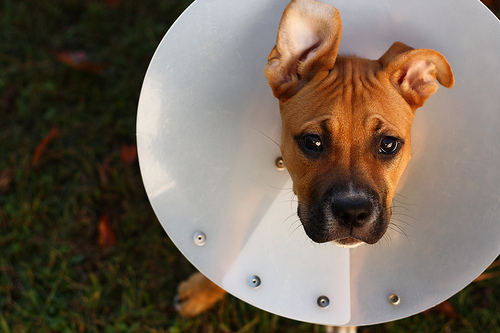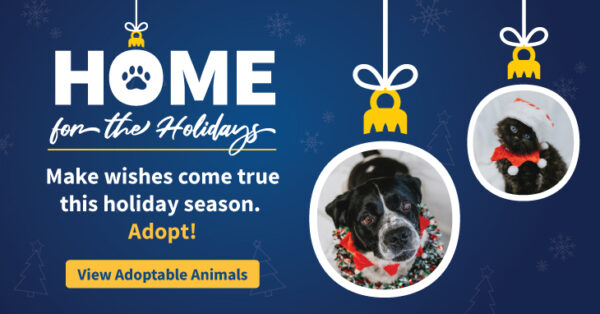What happens after surgery? Post-op recovery Part 2: Dogs
by Ontario SPCA and Humane Society | General Pet Care | November 6, 2017
A few weeks ago we highlighted post-operative care for cats, and this week we’re following it up with tips for your dog! Check them out and tell us about your experiences in the comments below.
Dog post-operative recovery tips
REST. One of the most important recovery tips is rest – especially for female patients and large dogs. Following surgery, all pets need to rest for 7 to 10 days and dogs need to be leash-walked only, no running or playing during recovery.

Cold compress. It’s common for male patients to experience swelling of the scrotum. If your male dog experiences excessive swelling, apply a cold compress for 15 minutes, 4 times a day, for 48hrs maximum. It may take up to six months for the dog’s scrotal sac tissue to be reabsorbed in the body.
Monitor. Watch for spreading or excessive redness, or any seepage such as pus. These are signs of infection and you should call your veterinarian, or the clinic who did the surgery immediately. It is an animal’s instinct to lick, so keep them from damaging the incision, as licking introduces bacteria.
Keep it dry. There are two layers of sutures; the inside ones are dissolvable and will not need to be removed, but the outside tissues are closed with tissue glue and can’t get wet. Keep the incision site dry for a full 10 days.
E-collars. We strongly recommend e-collars to help reduce licking of the surgical site and decrease introduction of bacteria. To ensure your E-collar is long enough; push it against your pet’s shoulder blades and lay your dog’s head and neck flat along the E-collar. The “cone” should be longer than your pet’s nose by at least one inch. The cones fit largely, so please don’t cut them down – this could make the cone too small, or introduce a dangerously sharp plastic edge. E-collars should be worn for a full 10 days. An alternative to this for females is Vetmed Wear, which looks something like pajamas for pets.
Back to routine. It’s important for your dog to be back on regular feeding and bathroom routine within 48hrs. Longer than that may be cause for concern. If your pet doesn’t return to routine, try walking them without an E-collar in an area they’re familiar with and other dogs frequent so they can be stimulated by the scent.
Water and less food. Have lots of fresh water available for your dog to help flush the anesthetic from their system which can make them feel nauseous. Feed your dog a quarter-portion of food when you get home. Keeping the portion size small will reduce the possibility of vomiting and nausea. If they do vomit, wait 2-3 hours before trying to feed them another small portion.
Follow up medication. Speak with your veterinarian or clinic staff about any pain control drugs your dog needs post-surgery. Discuss with your veterinarian how to safely and effectively administer the medication to ensure that you can confidently provide your dog with the best post-operative care possible.
Keep pets separate. Although neutered, it is possible for them to father puppies for up to two weeks after surgery. Just in case, keep them away from intact females during this time. Females near their heat cycle at time of surgery may have elements of their heat continue up to two weeks following surgery, including her attractant pheromones. Help her recover by keeping her separate from other pets so she can rest undisturbed.
Comment below to tell us about your experiences!
Categories
Testimonial
Thank you so much for all you do
Thank you so much for all you do every day to rescue animals in need. I can’t imagine the terrible situations that you see every day. It is great that you have the heart to help. Keep up the good work.
